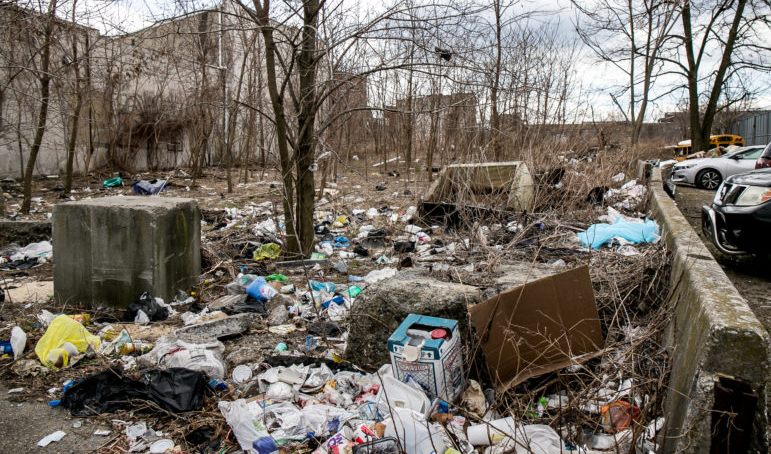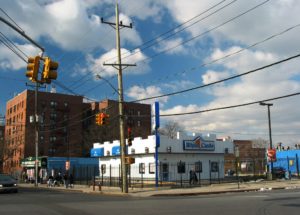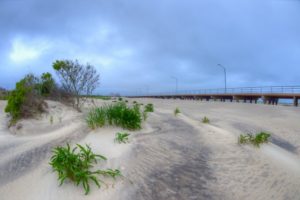The neighborhood of Far Rockaway is on the Rockaway Peninsula in the New York City borough of Queens.
It’s the easternmost section of the Rockaways, thus a “Far”. The name “Rockaway” might have meant “place of sands” in the Munsee language of the Native American Lenape people.
At times,Far Rockaway feels like another decade, or maybe another city.There’s an abundance of massive, vacant properties that are overgrown with weeds and blanketed with plastic and cardboard trash. Flocks of birds soar over the parking lot outside the mostly-vacant strip mall.
But it’s also an area now on the verge of a major transition.
Half a year ago, the City Council passed the rezoning of Downtown Far Rockaway, the second neighborhood rezoning to be approved under the de Blasio administration.
The rezoning permitted higher, bigger buildings within a 23-block area of downtown and is expected to result in the creation of over 3,100 apartments, nearly 164,600 gross square feet of retail space, and over 80,900 gross square feet of community facility space.
It also came with a package of investments in neighborhood services and infrastructure.Local New York City councilmember Donovan Richards says that the rezoning has already sent a jolt to real-estate forces in the area.
Developers, he said, including some big ones, are “knocking on our door.” There are budding plans for many of the area’s vacant lots. He’s noticing properties change hands: one 108-unit rent-stabilized building near the rezoning area was purchased for $12 million in 2014 and resold this February for $22 million.
Since the demand for market-rate housing isn’t strong in this yet-to-be-revitalized neighborhood, redevelopers are primarily focusing on working with the city to deliver affordable housing. In fact, 100% of the housing that’s already in the pipeline is affordable. Richards says he’s working to keep it that way, so that revitalization pushes people up, not out.
Photo courtesy of Adi Talwar Photography.



